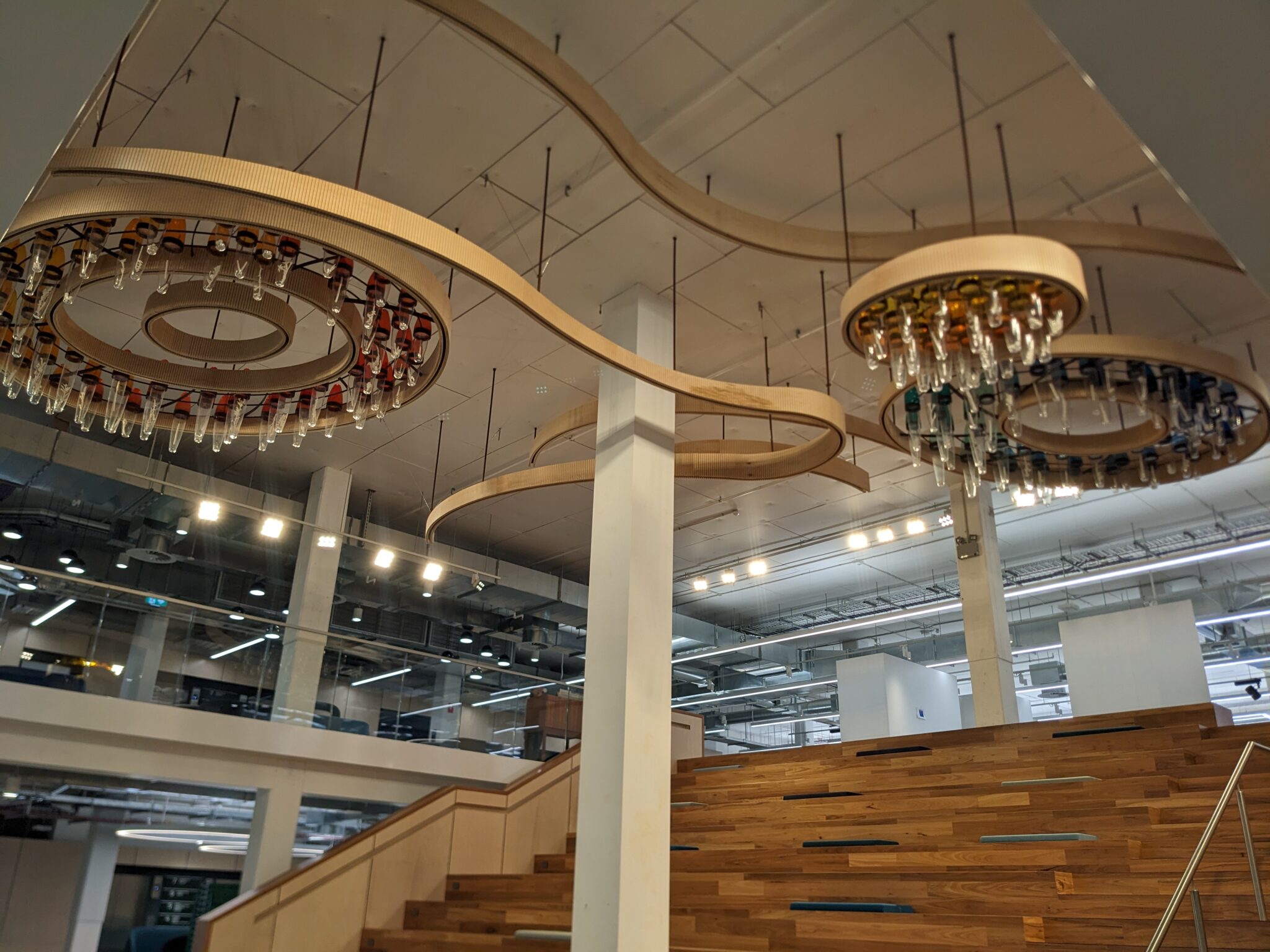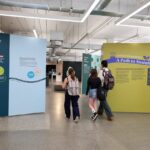As part of the TL Robertson Library refurbishment project, new public art was commissioned for the finished building. The artistic brief for the project called for “artworks…conceived as a commentary on the relationship between the library, people and landscape” and in response to cultural narratives developed in consultation with the refurbishment project’s Indigenous consultant, Dr Richard Walley.
The commissioned artist team consisting of Susan Milne and Greg Stonehouse, working with Nyungar artist Justin Martin, have developed a work in which two forms of knowledge are referenced and contrasted, with a topical focus on the changing climate in the South West of Western Australia.
The artwork titled Maia-au-Wodern (Sound of the Ocean) consists of three components: the atrium sculpture; and integrated works for the awning over the northern entry and the wall of the southern entry.
Atrium sculpture
The atrium sculpture consists of a number of hand-blown glass vials elevated within suspended sinuous black-butt timber forms that occupy and flow through the Library’s atrium, drawing on cartographic representations of atmospheric conditions, ocean currents and topographical features that science analyses to explain environmental conditions.
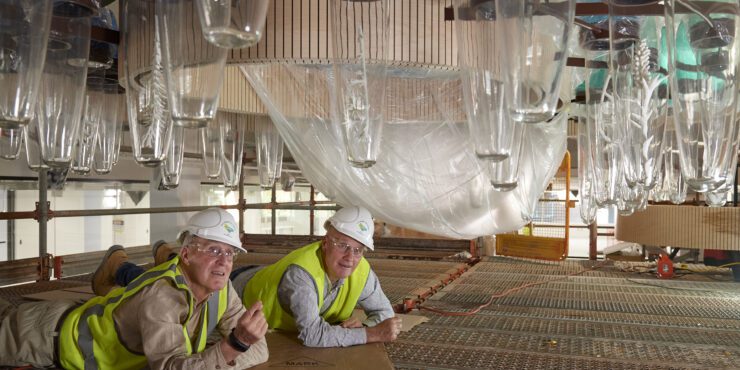
Blackbutt, mild steel, porcelain, blown glass with enamel, 2022. Photographer: Frances Andrijich
Each vial contains a hand-made ceramic object that is a sculptural representation of items collected by Justin Martin from Country that Nyungar people read as natural signs of the changing seasons. The vials are capped with glass seals, whose colours correspond with the colours associated with the six Nyungar seasons during which they were collected.
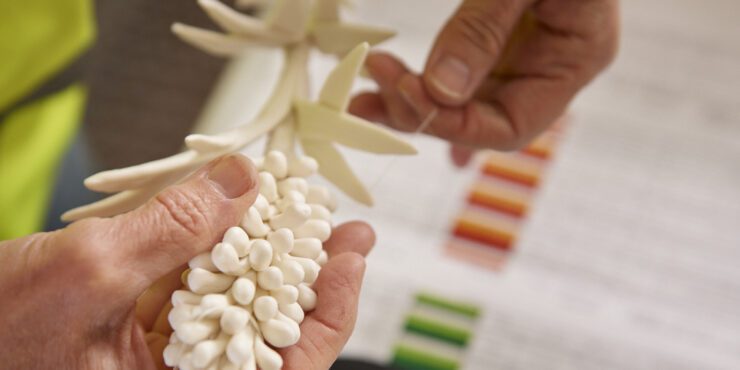
Blackbutt, mild steel, porcelain, blown glass with enamel, 2022. Photographer: Frances Andrijich
Northern entry and southern entry works
The Leeuwin Current is a major ocean current that shapes Western Australian seasons. Through the passage of the Leeuwin Current, the Ocean has a profound influence and seasonal effects on the climate within Nyungar Country, highlighted in the title of the artwork.
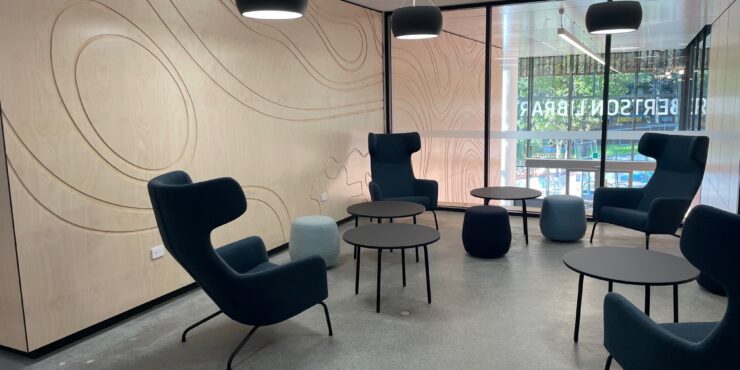
The Leeuwin Current is made present in the whirling forms articulated in the awning of the northern entry and the wall of the southern entry. Through these visual references the artists wish to draw attention to the importance of drawing on all available sources of knowledge, ancient and modern, that may facilitate our critical and adaptive response to climate change.
Including Indigenous art in our Library pays homage to the strong cultures that precedes our own, supports Indigenous artists and welcomes Indigenous students, staff and community members into our building. We hope that this beautiful, meaningful artwork will inspire visitors to TL Robertson Library into the future.
Enjoy reading Library news? Sign up to our newsletter.
